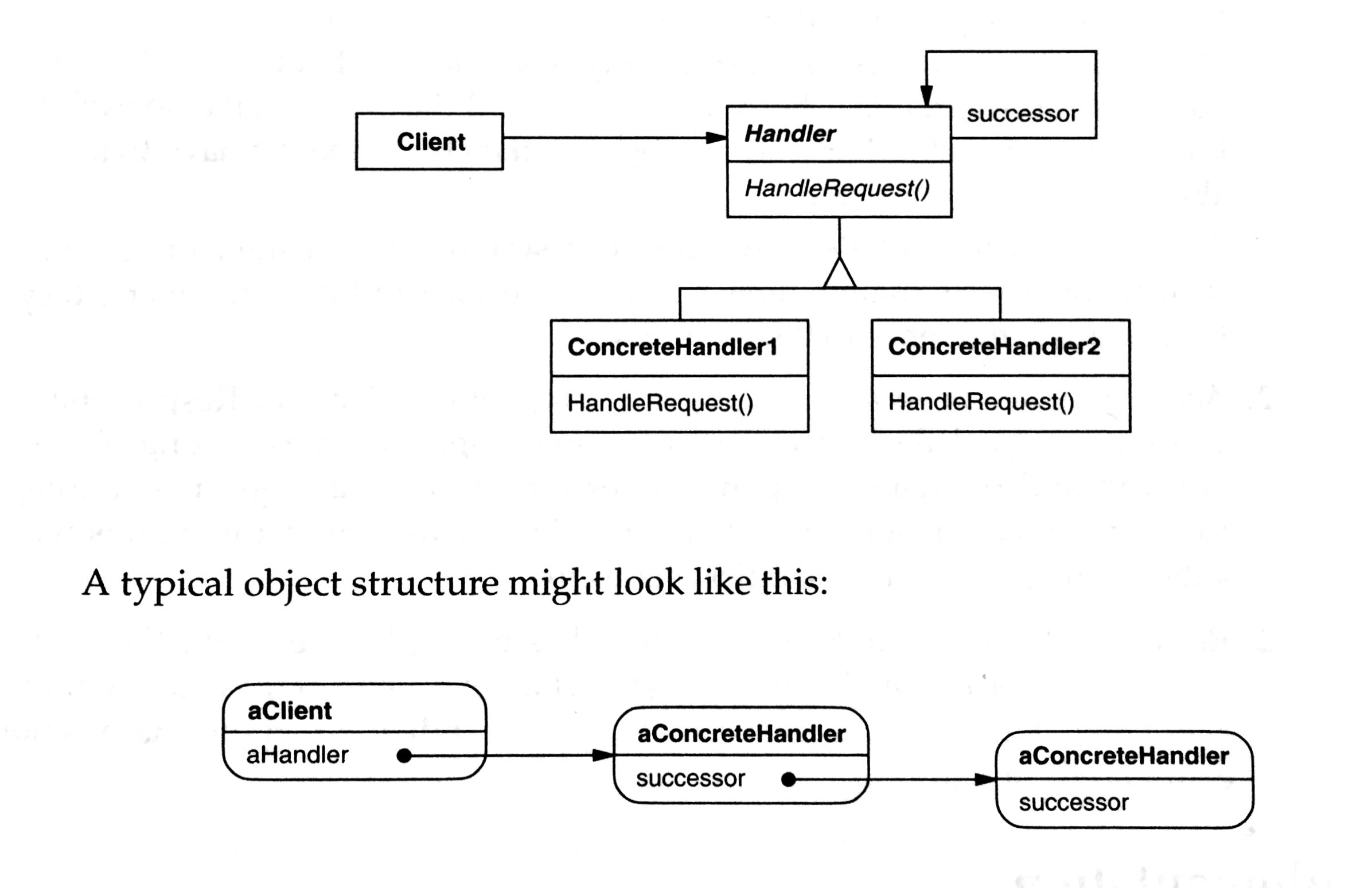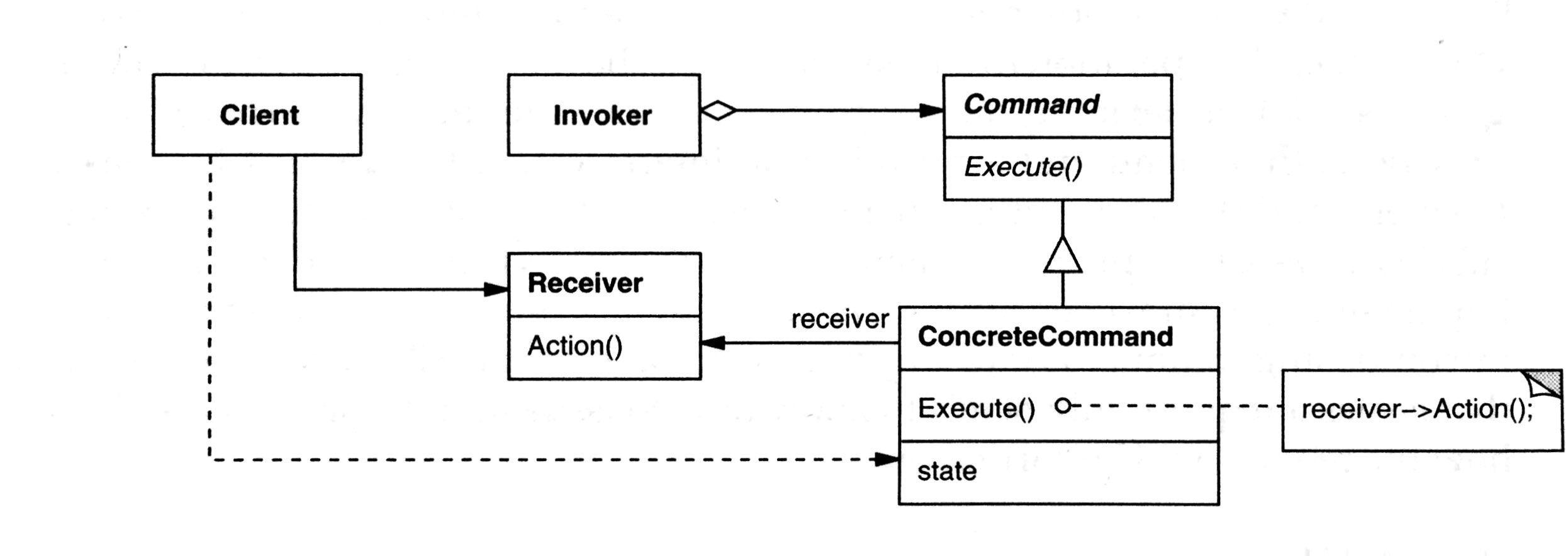CHAIN OF PESPONSIBILITY
When a request comes, chain the receiving objects and pass the request along the chain until an object handles it.
Scenario
- more than one object may handle a request
- set of objects that can handle the rest should be specified dynamically
Participants
-
Handler
- defines an interface for handling requests
- (optional) implements the successor link, i.e.,
class HelpHandler { public: virtual void HandleHelp(); private: HelpHanlder* _successor; } void HelpHandler::HandleHelp() { if (_successor) { _successor->HandleHelp() } }if the subclass is not interested in handling the request, it can just leave the handle method default and it will gets passed to next successor.
-
ConcreteHandler
- if it can handle the request, it does so; otherwise, it forwards the request to its successor
-
Clinet
- initiates the request to ConcreteHandler object

Example
Application* application = new Application();
Dialog* dialog = new Dialog(application);
Button* button = new Button(dialog);
button->HandleHelp();
COMMAND
Bundle command, args, receiver into an object which can be executed later. It allows generic handling of different request, queuing those request and support undoable operations.
Scenario
- specify, queue and execute requests at different times
- support undo
- logging changes so they can be reapplied in case of system crash
- for transaction system
Participants
- Command
- declares an interface for execution an operation - Execute, Undo, etc
- ConcreteCommand
- defines a binding between a Receiver object and an action
- implements Execute by invoking the corresponding operations on Receiver
- Client
- create ConcreteCommand object and sets its receiver
- Invoker
- ask command to execute the request


Example
class Command {
...
virtual void Execute() = 0;
}
class OpenFileCommand: public Command {
OpenFileCommand(Application*);
virtual void Execute();
}
void OpenFileCommand::Execute() {
char* name = AskUser();
if (name != 0) {
....
document->Open();
}
}
